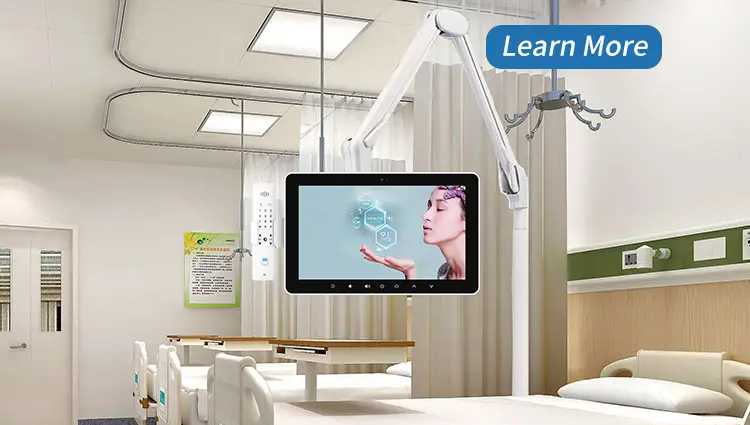For patients spending time in hospitals, the provision of a bedside TV can be a welcome source of entertainment and a distraction from their health concerns. The modern healthcare environment has seen a significant integration of technology to enhance patient experience, and the bedside TV in hospital is a part of this progression. It not only provides a diversion from medical procedures and treatments but also contributes to the overall well-being of patients by offering comfort and a sense of normalcy. Studies have even suggested that the presence of a bedside TV can positively impact recovery times. Therefore, hospitals are increasingly recognizing the importance of the bedside TV in hospital in the healing process and are making it a standard feature in patient rooms.
Can You Get a TV in Hospital?
Yes, many hospitals nowadays offer bedside TVs as part of their patient amenities. These TVs are usually equipped with Hospedia systems, which are a form of in-room technology allowing patients to access various services, including television programming.
How Do I Top Up My Hospital TV?
Patients or their caregivers can typically top up the hospital TV service by contacting the hospital’s patient services department or through an online platform, if available. The process might involve purchasing additional viewing time or paying for specific channels or services.
How Much Does Hospedia TV Cost?
The cost of Hospedia TV can vary depending on the hospital, the length of the patient’s stay, and the specific services availed. Some hospitals might offer basic TV services at no extra cost, while others may charge a daily or weekly fee for extended access.
How Does Hospedia Work?
Hospedia is a system designed to provide in-room entertainment and information to hospital patients. It is often accessed through a bedside terminal or a mobile application, if the hospital supports wireless access. Patients can use Hospedia to watch TV, listen to the radio, order meals, access patient education materials, and communicate with hospital staff.
Do You Get Free TV in Hospital?
Whether or not patients receive free TV in hospital depends on the hospital’s policies and the services they offer. Some hospitals include basic TV services as part of their patient care package, while others may require a separate fee for TV access.
Why Do You Have to Pay to Watch TV in Hospital?
The decision to charge for TV services in hospitals can be multifaceted. It may be due to the need for additional revenue, the cost of providing and maintaining the TV system, or the desire to offer a range of paid services that can be tailored to patient preferences and needs.
What Happens if You Don’t Pay for TV?
If a patient does not pay for TV services and the hospital enforces payment, they may lose access to the TV until the outstanding amount is settled. It is essential for patients to communicate with the hospital’s patient services if they face difficulties in meeting these charges.
Do People Get Paid to Watch TV?
Yes, in certain contexts, people can get paid to watch TV. For example, professional critics, reviewers, and researchers may receive payment for their analyses of TV shows or for their expertise in television-related fields.
Do Shows Pay to Be on TV?
No, TV shows generally do not pay to be aired on television. In fact, it is the other way around. Networks and platforms typically pay for the rights to broadcast popular shows to their audiences. These costs are factored into the overall budget of the television network,which includes the fees for acquiring programming, producing original content, and maintaining the infrastructure for distribution.
In conclusion, the availability and cost of bedside TVs in hospitals are determined by the specific policies of the healthcare facility. Hospedia systems are commonly used to provide a range of services, including TV, to hospital patients. The costs associated with these services can vary, and in some cases, they may be covered as part of the patient’s care, while in others, they may require an additional fee.
The integration of technology in hospitals serves to improve the overall patient experience, and bedside TVs are a significant component of this. As for TV shows, they are not paid to be on TV; rather, it is the television networks and platforms that pay for the rights to air them. This dynamic is a key part of the television industry’s business model, ensuring that viewers have access to a wide range of programming options.

